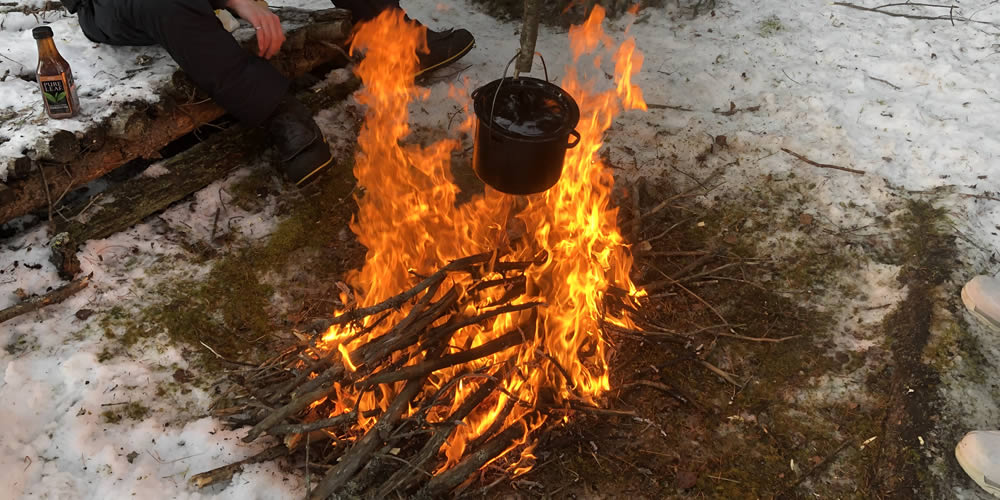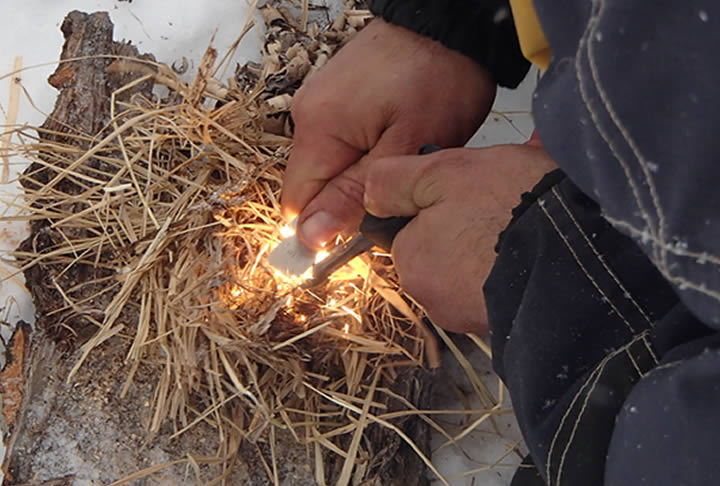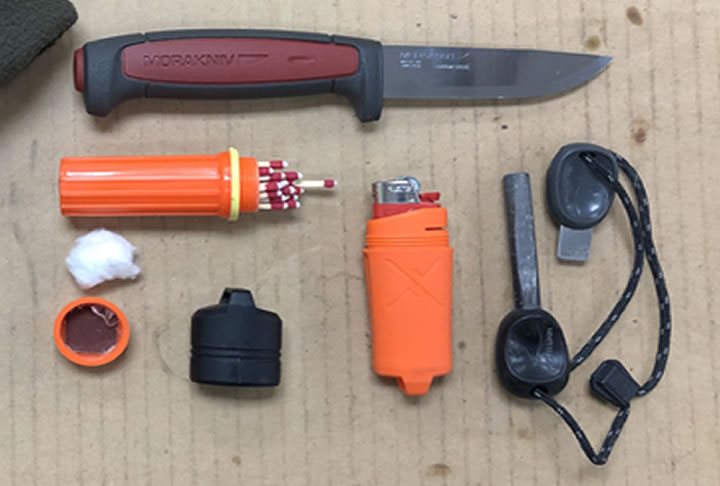
So a few weeks ago I had the privilege of listening to Paul Kirtley's Talk on Fire at the Outdoor Adventure Summit and it got me thinking hard about how I think about fire lighting skills and therefore how these skills are explained and taught. One of the things Paul's excellent presentation got me thinking about is the factors we need to deal with to be successful in fire lighting.
In other words why are some people successful in attempting to light a fire, while others fail? Is it always just based on science or are their other factors we should consider? Paul spent a great deal of time talking about what I consider to be the most important factor; the science of fire lighting. But after bouncing this around in my head for a while, I came up with four things we need to consider. The last factor; luck I believe is often ignored, but which has a greater or lesser effect depending on a person's ability to understand and control the other three.
SSEL
The SSEL of Fire Lighting is a handy mnemonic to help us remember these four factors. SSEL stands for Science, Skill, Equipment and Luck. Each of these factors needs to be considered to properly light a fire in any condition the wilderness throws at us. They need to be considered in order. The worse the conditions the more important become the first factors. The better the conditions and more you can rely on the last factor and that the third factor becomes less important as well.
S
The first factor is Science. The science of fire lighting is the most important or critical factor in lighting any fire in the wilderness. It must be completely understood to light a fire in harsh cold conditions and the laws of physics, simply cannot be ignored. You might be able to get away without understanding the underlying science, but you cannot get away with breaking the rules.

To learn the science of fire lighting you need to read, study, listen and ask questions. The science includes the basic rules of physics, ignition, combustion, mass and materials. You need an excellent understanding of the forests and other wilderness environments that you travel in. Included in this are the identifications of woods and other plants and most importantly the identification of burnable, dry, seasoned woods and other forest items usable as tinder's or fire lighting aids.
S
The second factor is the Skills you need to learn. Fire lighting is a series of skills that need to be learnt to become successful in wilderness survival in the northern hemisphere. Even the placement of the fire in the environment and your camp is a skill. These skills include learning about collection wood, building fire platforms and layout and preparing the small woods need for successful lighting in poor conditions.

Once you can do that then it's time to learn how to ignite and light a fire. As these are mastered then the “Rule of Twos” and other fire management skills need to be learnt and mastered along with fire safety rules. Learning these numerous required skills takes time. Do not waste your time just practicing ignition or fire lighting skills, they are just one of the many steps along the way.
Depending on how you wish to ignite your fire, some of these skills may take much longer to master, like bow-drilling compared to learning to use a quality striker properly. Learning these skills involves starting with basic equipment like Strike Anywhere Matches, Safety Matches, Lighters and Strikers. Skills must first be practiced in good conditions and then in poor, windy, cold and wet high humidity conditions because those are the times that we will need a fire quickly to save our lives or those of our companions if stranded or in trouble in the wilderness.
E
The third factor is the Equipment required to light a fire in the wilderness. This factor is often given short shrift because so much junk equipment exists that only works in good conditions or when you have some luck. It starts like skill with forethought and preparation, i.e. if your gear is always carried, of good quality, secure properly, brightly marked to avoid loss and easy to access. If it’s a survival situation, skip all the muck about E&E or combat survival. You want to found quickly and you will not be chased about or searched, so why carry small concealed gear that is green or black, when a bright orange striker is less likely to be left behind or easily found when dropped into the snow or mud.

If you carry good equipment that is redundant or as a backup item then you have a much better chance of actually lighting a fire. That means I always carry a lighter as my principle fire lighting tool. Yes it will stop working for many reasons, but it will save my matches for critical situations, i.e. when the lighter fails. I back that up with a high-quality striker. I keep these three items on me at all times. I back them up with some tinder and a few fire lighting aids. Don’t take chances, if you carry three high-quality means to light a fire your chances of lighting that fire in poor conditions are much greater.
L
The fourth factor is Luck. Luck, I don’t need it, I don’t want to rely on it and I want to remove the need for it from the fire lighting equation. Sadly you cannot completely remove this factor. Yes the better you understand science, learn fire lighting skills and carry the right equipment always, the less luck you need to light your fire. Yes you should not be silly enough to rely on luck to get a fire going, although many do either by choice or due to lack of skills. Some days you may not have luck on your side and may need to keep trying or keep looking for the right materials to get a fire going.

Over the years I have seen numerous students do everything right and simply had a bit of bad luck. While I have seen other students who did only a few things right but had good luck and lit their fire easily. There are some demo's I have done hundreds of times, a few time I had bad luck and a few times when I did not deserve it I have had good luck. Some days you have luck and some days you don't. Don't rely on luck to survive. Understand that if you get dumped in the forest and simply walk up to the first big evergreen and it’s a large dry canopied white spruce, you were lucky, not skilled or ordained by God to survive. You were just lucky enough to have found a treasure trove of fire lighting materials within the first minutes of being stranded.
So why bother to learn the SSEL of fire lighting. Does it matter? Yes it does because it will help guide you to better ways to light a fire when stranded in the wilderness. The SSEL of fire lighting is a handy mnemonic that will help your fire lighting. SSEL stands for Science, Skill, Equipment and Luck. Learn the Science of fire lighting, practice the Skills whenever you get the chance, carry good quality Equipment continually and don't rely on Luck to get you through a tough situation.
Understand and be prepared that on some days you may or may not have luck on your side. It's on days like that you need more science, skill and the best equipment possible. So best of luck in your fire lighting and don't forget about the SSEL.

